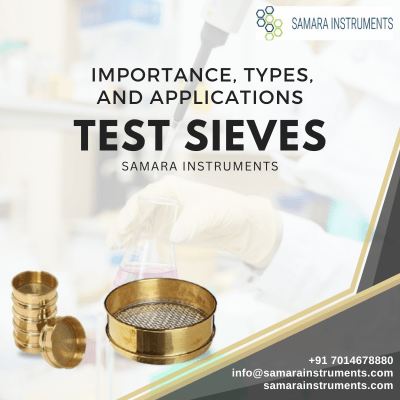Test Sieves
A test sieves, a crucial scientific instrument, plays a pivotal role in analyzing and measuring the particle size distribution of various materials. This precision instrument consists of a woven wire mesh with a specific mesh opening size, securely mounted in a rigid frame. When a sample of the material is placed on the sieve and subjected to agitation, it effectively segregates particles based on their size. Larger particles remain on the sieve, while smaller particles pass through the mesh.
Importance of Test Sieves
The significance of test sieves spans across multiple domains, making them indispensable tools for scientists and engineers alike. Test sieves find application in:
- Grading Aggregates: Test sieves are essential for evaluating the grading of aggregates, such as sand and gravel.
- Ore Particle Sizing: In mining and geology, they are used to determine the size distribution of ore particles.
- Powder and Pigment Analysis: Test sieves are vital for assessing the particle size distribution of powders and pigments in the chemical industry.
- Food Product Analysis: Industries involved in food processing rely on test sieves to measure the particle size distribution of products like flour and sugar.
- Pharmaceutical Quality Control: In pharmaceuticals, test sieves help ascertain the particle size distribution of drugs and various pharmaceutical products.
- Environmental Sample Analysis: Environmental scientists utilize test sieves to determine the particle size distribution of soil, sediment, and other environmental samples.
Types of Test Sieves
Diverse types of test sieves are available, each designed to cater to specific requirements. Common varieties include:
- Standard Test Sieves: These sieves adhere to industry standards such as ASTM E11 or ISO 3310-1. They are typically crafted from stainless steel or brass and feature mesh opening sizes ranging from millimetres to micrometres.
- Weighing Test Sieves: Designed for precision, these sieves are used in conjunction with a balance to accurately measure the weight of particles that pass through the mesh. They usually have larger mesh openings and lightweight materials like aluminium.
- Air Jet Test Sieves: Ideal for fine particle analysis, these sieves employ a stream of air to separate particles, making them suitable for powders and pigments.
- Microscopy Test Sieves: Tailored for ultra-small particles, such as nanoparticles, these sieves feature exceptionally small mesh openings and are typically constructed from materials like metal or glass.
Utilizing a Test Sieve
Effectively using a test sieve requires specific equipment and a systematic approach:
- Select the Correct Sieve: Choose a sieve with a mesh opening size slightly larger than the largest particles in the sample.
- Prepare the Sample: Place the material to be sieved on the sieve and secure it with the lid.
- Sieve Shaking: Utilize a sieve shaker to vibrate the sieve, allowing particles to move through the mesh. The duration of shaking is predetermined, typically around 5 minutes.
- Analyze Results: After shaking, carefully remove the lid. The remaining particles on the sieve are the coarse particles, while those passing through the mesh are the fine particles. Collect and analyze both fractions.
Applications Across Industries
Test sieves find applications in diverse industries, including:
- Construction: Determining aggregate grading, as seen in sand and gravel analysis.
- Mining: Assessing ore particle size distribution.
- Chemicals: Analyzing particle size distribution in powders and pigments.
- Food and Beverage: Ensuring the desired particle size distribution in food products like flour and sugar.
- Pharmaceuticals: Quality control through particle size distribution assessment.
- Environmental Sciences: Studying soil, sediment, and environmental samples.
Choosing the Right Test Sieve
Selecting the appropriate test sieve depends on factors such as particle size, required accuracy, and budget constraints. Consult with experts in the field to make an informed choice tailored to your specific application.
In Conclusion
Test sieves serve as invaluable tools in measuring the particle size distribution of materials across various industries. They play a critical role in ensuring product quality and consistency, making them indispensable instruments for scientific research and industrial applications.


